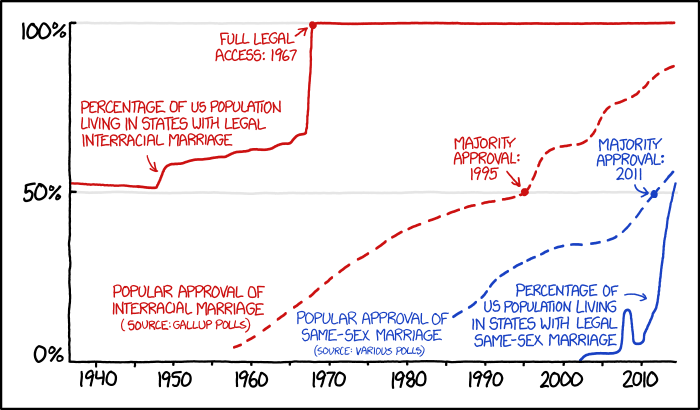Yesterday, for the first time since its creator headed for the hills, we heard an official peep from Google+. Daniel Besbris, who replaced Vic Gundotra as Google’s head of social media, gave an interview to Recode in which he discussed the future of his company’s moribund social network. Over 1,600 words, Besbris does his best to say nothing of note. "We’re actually very happy with the progress of Google+," he says, presumably straight-faced. And there are some valid reasons for the company’s happiness: Google+ gave its hundreds of millions of users a unified login across all of its products, making those relationships easier to manage (and monetize).
But almost since the day it launched, Google+ has struggled to overcome the perception that it was dead on arrival. Nearly three and a half years after opening its doors the public, you would be hard pressed to name a single person who ever became famous because of a following they built on Google+; to name a news story that broke there first; or to identify a way that it meaningfully differentiated itself from the glut of social products on the market. I think there are lots of people who use Google+, if only in passing; I think there are vanishingly few of them who love it.
Frontiers. Avenues. Location.
Asked about what areas Google+ could improve in, Besbris avoided the question. "We can never have enough energy or focus on mobile," he said — the tech-world equivalent of telling a prospective employer that perfectionism is your biggest weakness. "I’m really happy with what we have but I think it opens up new avenues and new frontiers, stuff we can do with location that we’ve never been able to do before." So this is what’s coming to Google+, I guess — avenues. Frontiers. Location.
As it so happens, there are a number of things Google could do to improve its social-media standing more or less overnight. (I wanted to share them with Besbris myself, but Google declined to put him on the phone.) Here are three off the top of my head.
Photos are buried inside the Google+ interface
Give Google+ Photos its own app, and drop the G+ branding. Google’s photo product is a complete gem: unlimited photo backup, with incredible search, and some spectacular "auto awesome" features that turn your photos into delightful little GIFs, among other things. Earlier this year, the company unveiled "automatically when you get back from a trip, turning them into exquisite little digital scrapbooks. Unfortunately, photos are buried inside the Google+ interface, both on mobile and the web. It’s high time to give Google’s photo products the app it deserves, untainted by the G+ branding.
Kill the Circles. Like many other social networks, Google+ thought it could differentiate itself from Facebook by prioritizing privacy. Its solution: forcing users to divide everyone they had ever met into groups, and develop their own internal cognitive models for which content should be shared with which groups. "Our users love Circles," Besbris told Recode. "They love that Google+ has privacy built in as a feature from the very beginning." The company notes with pride that other networks, including Facebook, have since added (barely used) features letting you divvy up your friends into buckets. It might look nice on a whiteboard, but in practice the Circles model is a nightmare. No one can remember who they put in which circle, or which circle is supposed to see which stuff, and before you know it the user has abandoned Google+ entirely for Facebook, because at least our friends are there. Facebook literally ran mind experiments on us this year — to make us sad — and we still reload that news feed a dozen times a day. As long as you persist with the fiction that Circles are a magical innovation beloved by all users, you will be walking down the exact same privacy-paved road to hell as Path. Do you really want to be on the same road as Path? Adopt a simplified follower/following model, retain some private sharing options, and I'll stop trying to make me remember the difference between "friend" and "acquaintance."
Do you want to be on the same road as Path?
Let your team build weird new stuff. Gundotra’s nickname at Google+ was The Victator. He had a more or less impossible job, and I can understand why he wanted his team to focus on a few strict priorities. But it’s late 2014, and the game is lost. Maybe it’s time to try something new? Two of your former employees, David Byttow and Chrys Bader, quit their jobs at Google+ so they could do just this. A few months later they built and released a novel social app called Secret, which immediately became the most buzzed-about app in Silicon Valley. There is tons of talent on the Google+ team, and you have them doing … what, exactly? Facebook craps out doomed experiments all the time, and the only consequence seems to be that it’s a more appealing place for designers and engineers to work. Do you want to be building the next Slingshot or Hyperlapse, or do you want to re-engineer the back end on the Google+ Communities page?
I’m not trying to suggest any of this is easy. Frankly, it would be a surprise if Google was the most dominant player in social media in 2014. The company started too late, and its product had the look and feel of an also-ran. But Besbris’ whistling past the graveyard won’t do Google+ any favors. Its moment came and went, and the time to change is now.


























